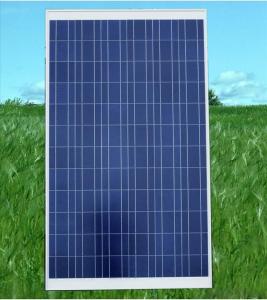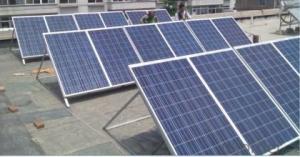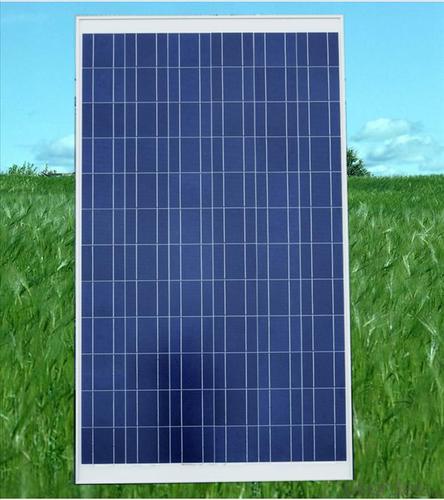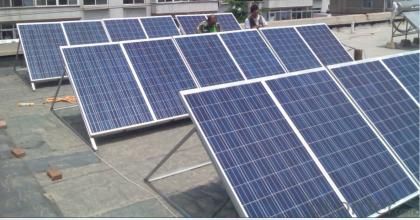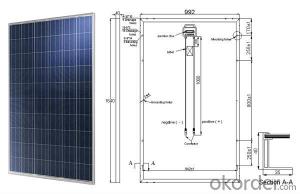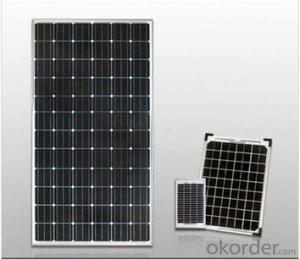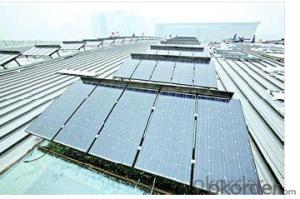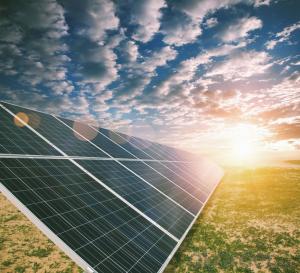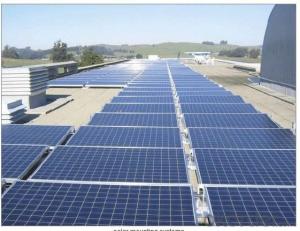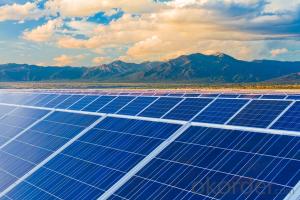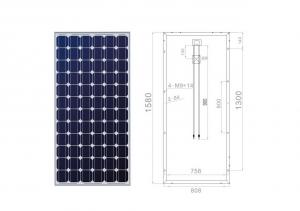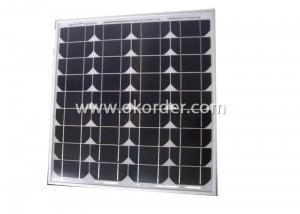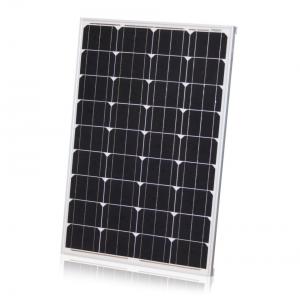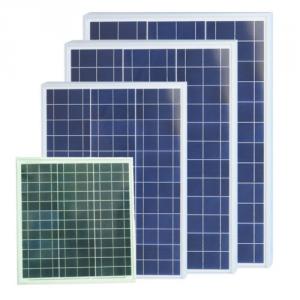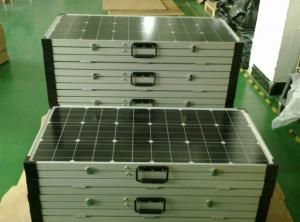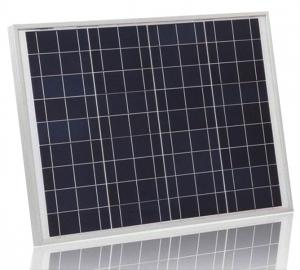CRM310S156P-72 Poly Crystalline Solar Panels Montana
- Loading Port:
- China main port
- Payment Terms:
- TT OR LC
- Min Order Qty:
- 100000 watt
- Supply Capability:
- 1000000 watt/month
OKorder Service Pledge
OKorder Financial Service
You Might Also Like
Specification
About us
CNBM International Corp, established in 2004, is the business entity for trade and logistic of CNBM Group.With the advantages in Cement, Composite Materials, New Building Materials and Engineering, CNBM mainly concentrate on coal, steel and construction equipments and give priority to solar and wind energy development.CNBM International is highly recognized by its business partners and clients all over the world and has established good business relationship with the customers in over 120 countries and regions all over the world.
Introduction
This installation Manual contains essential information for the electrical and mechanical installation that your must know before installing CUSTOMER PV modules. This also contains safety information you need to be familiar with .All the information described in this manual are the intellectual property of CNBM and based on the technologies and experiences that have been acquired and accumulated in the long history of CUSTOMER. This document does not constitute a warranty, expressed or implied.
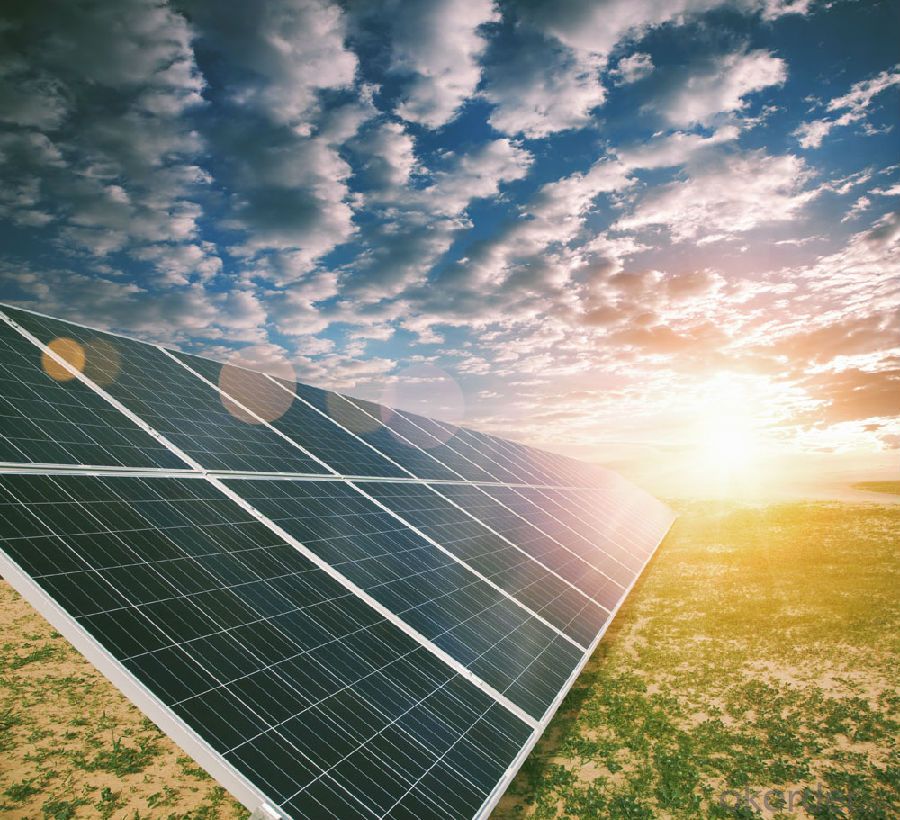
Data sheet
Maximum power | 310W |
Cell type(mm) | Polycrystalline solar cell 156*156 |
Number of cell(pcs) | 72(6*12) |
Manufacture site | China |
Open-circuit voltage(voc) | 45V |
Maximum power voltage(vmp) | 37V |
Short-circuit current(isc) | 8.8A |
Optimum operating current(imp) | 8.38A |
Power tolerance | 0~+5W |
Module efficiency | 16% |
Dimensions(mm) | 1956*992*40 |
Weight | 27 kg |
Backsheet | Silver |
Frame Colar | White |
Frame | Anodized Aluminum Alloy |
FAQ:
Q1: Why buy Materials & Equipment from OKorder.com?
A: All products offered byOKorder.com are carefully selected from China's most reliable manufacturing enterprises. Through its ISO certifications, OKorder.com adheres to the highest standards and a commitment to supply chain safety and customer satisfaction.
Q2: What is a solar PV module?
A: A solar PV module consists of many solar cells that are connected together (typically in series) and packaged in a frame (typically made of aluminum).
Q3: What are the advantages and disadvantages of monocrystalline solar PV modules?
A: Monocrystalline solar PV modules are the most efficient type of solar PV modules, with the exception of CdTe thin film solar PV modules. As a result, monocrystalline solar PV modules are more expensive when compared to almost all other types of solar PV modules.
Q4: What is the typical service life of a solar PV module?
A: The typical life of a PV module is 25 years. However, superior quality PV modules boast service lives up to 35-40 years (electrical generating capacity is often reduced, however by that point).
- Q: solar panels!!they are fantastic! cause they are the new way of quot;chargingyour home, without killing the earth!would you install them, or not? and make sure you say WHY
- I believe the best economy comes out when a completely green house is built. Solar panels are expensive, and I'll rather use some of the investments to build different back-up systems, instead of bying solar panels for it all. If I build another house, my fancy stuff would be the green stuff. The house will have a water radiator heating system and a heat pump to circulate warm or cold air in the house. Heat pump also used to heat water for heating system. I'll use solar panels to make enough electric power . charging a deep cycle battery pack for back up power, 2. to power heat pump, fridges., freezers, and water pumps, when I'm not home at the house. When I'm home I'll run a bio-fueled(bio-waste and pellets or firewood) powered steam engine with a 0KW 0-220V generator when I need electric stove and oven, dishwasher and laundry appliances. I'll use a wood stove, BBQ and oven on the porch for summer cooking. I'll use excessive heat from steam engine for heating water tank. I'll also have an bio-fueled (waste and pellets or firewood) water heater for winter heating back-up. Of course I'll make sure I'm connected to the electric grid, so I can get credit from power company for the excessive electricity that will occasionally come out from solar panels. Steam engine can be replaced by diesel powered 0KW generator, if it's possible to fuel it with veg-oil home made diesel fuel. Depends whats most accessible at my living site.
- Q: I need to build a battery array to use with my solar panels I just bought. I want to be able to store enough energy to be draw from it at night, possibly around the clock. Is there a down side to using the deep cycle battery I bought from autozone and 6 or 7 more just like it, or do I need to get some other battery?
- There are batteries particularly made for solar, such as the Trojan T05-RE . I think the RE stands for renewable energy. A deep cycle battery should work all right, although not quite as well. What you want to do is try out your setup first, with just one battery, and the panels provided. If this is one of those 45 watt kits, you may be surprised at how little energy you actually get from the panels. Increasing the number of batteries won't help, either - that's like getting a larger water tank, when you only have a trickle to fill it. If your goal is really to save money, the most cost-effective solar is the grid-tied type, with no batteries at all. That's what we have, and I've never regretted it.
- Q: Can solar panels be installed on a carport structure?
- Yes, solar panels can be installed on a carport structure. In fact, carports are a popular choice for solar panel installations because they provide a dual purpose of providing shade for vehicles while generating clean, renewable energy. The structure of a carport offers ample space for solar panels to be mounted, allowing for efficient energy production while maximizing the use of available space.
- Q: I'm curious, for those who have had solar panels installed on the rooves of their houses:How much did you pay? How much energy do the panels produce? Did it dramatically cut down on your electricity bill? Was it worth it? Thanks!
- I'm okorder /
- Q: About how much would it cost to purchase and install solar panels for the average American house so that the house can be off the power grid and use the same amount of electricity as it normally does?
- And even though the better technology is out there, it is not in mass production. Perhaps one day it will be, but it is not there presently Silicon wafer based solar cells Despite the numerous attempts at making better solar cells by using new and exotic materials, the reality is that the photovoltaics market is still dominated by silicon wafer-based solar cells (first-generation solar cells). This means that most solar cell manufacturers are equipped to produce these type of solar cells. Therefore, a large body of research is currently being done all over the world to create silicon wafer-based solar cells that can achieve higher conversion efficiency without an exorbitant increase in production cost. The aim of the research is to achieve the lowest $/watt solar cell design that is suitable for commercial production.
- Q: first of all, to be honest i have totally no idea on how a solar panel works.my task is to design something like a solar powered street lamp which store sun energy during day time and convert it into electrical energy then light energy so that the lamp can work during night time.any ideas on how to design the solar panel? which can store enough or more enegry in case there is no sunlight another day. and low cost as well :D
- You okorder /
- Q: I hooked up a 2V solar panel to a small relay. The relay switches at 9V. When I have light shining on the panel it puts out aorund 3-4V, but when I hook it up directly to the relay it drops to V and doesn't switch the relay. Why? and How do I fix it?-2V Mono-Crystalline Solar Panel -JWD 7 4 reed relay
- I suspect the voltage is OK but the amount of current the solar cell is capable of delivering is less than the relay coil needs to operate. The current the relay tries to draw overloads the PV. You need to add additional PVs in parallel to operated the relay coil. An alternative is to use a low current draw relay coil or use a transistor switch. Hope this helps, NewtonLaw
- Q: How do solar panels impact the local job market?
- Solar panels have a positive impact on the local job market as they create new employment opportunities in the renewable energy sector. The installation, maintenance, and manufacturing of solar panels require skilled workers, which leads to job growth and economic development in the community. Additionally, the transition to solar energy promotes a shift towards clean energy sources, attracting more investments and creating a sustainable job market for the future.
- Q: I have a question about solar panels. What are the benefits of this system if I installed in my home. for example i know it produces electricity but does it do anything else? How many panel would you guys think I would need for 2000 sq ft. do you know if it produces hot water? Thanks for your help
- 30 years ago when the Hippies shut down our clean Nuclear plants They promised a clean miracle. No such thing! I'm sad to say at best Solar will only provide a fraction of our energy needs. (I guess if one abuses enough drugs they'll think up anything?) I am an apprentice for a Electric foreman; we calculate $50,000.00 in panels will meet the needs of a k foot house. So you would need a hundred grand. You'd save 00 dollers a month in electricity, but you'd be paying ,000 a month to pay off your loan of 00,000.00 in panels. God Bless You indeed a nice thought if it was practical.
- Q: Can solar panels be installed on a warehouse or storage facility?
- Yes, solar panels can be installed on a warehouse or storage facility. In fact, these types of buildings often have large, flat rooftops that are ideal for solar panel installation. Installing solar panels on warehouses or storage facilities can help generate clean and renewable energy, reduce electricity costs, and contribute to sustainability efforts.
Send your message to us
CRM310S156P-72 Poly Crystalline Solar Panels Montana
- Loading Port:
- China main port
- Payment Terms:
- TT OR LC
- Min Order Qty:
- 100000 watt
- Supply Capability:
- 1000000 watt/month
OKorder Service Pledge
OKorder Financial Service
Similar products
Hot products
Hot Searches
Related keywords
